Who Set Nuh on Fire?
The attack on a religious procession sparked off communal violence in a region notorious for its mining mafia and cyber crime
 Rajeev Deshpande
Rajeev Deshpande
 Rajeev Deshpande
Rajeev Deshpande
 |
04 Aug, 2023
|
04 Aug, 2023
/wp-content/uploads/2023/08/Nuh1.jpg)
Nuh, Haryana, August 1, 2023 (Photo: AP)
Unaware of the violent events in Nuh town on the afternoon of July 31, car-borne commuters heading towards Delhi from Punhana suddenly found themselves under attack near a large village called Singar. A mob lying in wait blocked vehicles and set upon unwary passengers, some of them elderly people who could not flee. It was hours before a police patrol from Hodal, some 12km away, rescued the victims and brought them to a private hospital for treatment for serious injuries. Singar is about 40km and more than an hour’s drive from Nuh but a group armed with sticks had set an ambush, turning the road into a riot zone with the element of surprise completely in its favour.
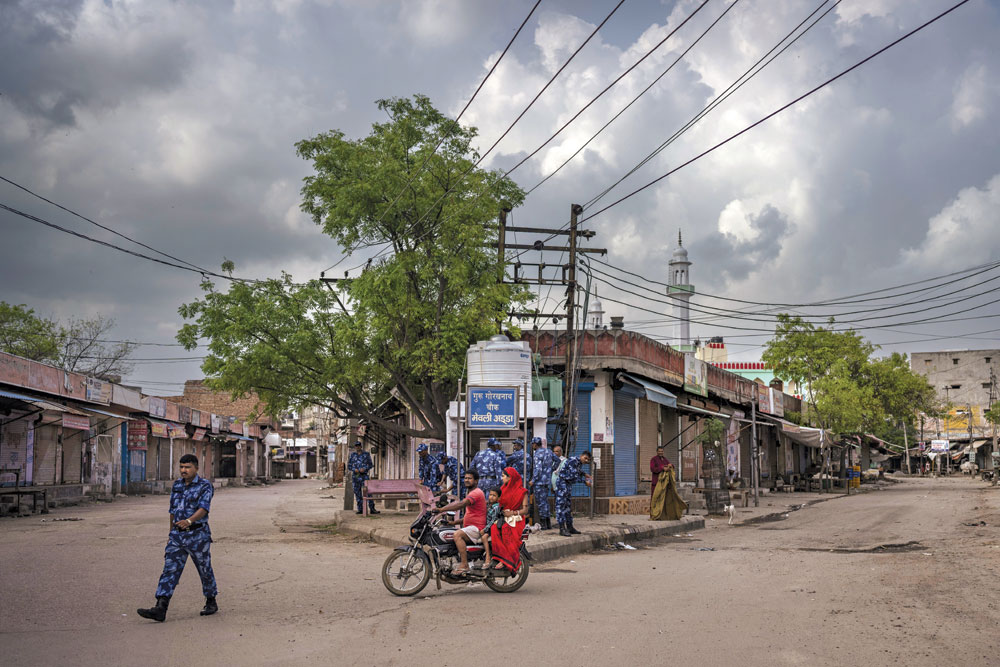
In Nuh town itself, a Jalabhishek Shoba Yatra (a Hindu religious procession) organised by the Vishva Hindu Parishad (VHP) set off for the Nalhar Mahadev Mandir nestled in the Aravallis about 9km away without any apprehension of lurking danger. Soon after the yatra with a few thousand participants from nearby areas reached Adbar Chowk, a mob attacked the yatris with sticks, stones, bottles and illegal firearms. “An angry mob of some 600- 700 people came from the side of Tauru (about 16km from Nuh and not far from the Rajasthan border) shouting ‘Allah O Akbar’ slogans and began stoning the police force,” states the FIR registered by the in-charge of the Crime Branch at Sector 39 Gurugram who was present at the spot. In a clearly premeditated move, cops were singled out and fired on with illegal weapons. “In the course of the firing Inspector Anil Kumar was shot in the stomach,” the FIR says. Soon, two home guards had died in the violence. The outnumbered police party fired in the air with AK47s and pistols to thwart a mob bent on murder as part of a well-thought-out conspiracy. Offences should be registered against those in the mob for “…attacking the police with bricks, stones, lathis, illegal weapons while raising religious slogans,” the FIR concludes. Cases have been registered under several provisions of the Indian Penal Code (IPC).
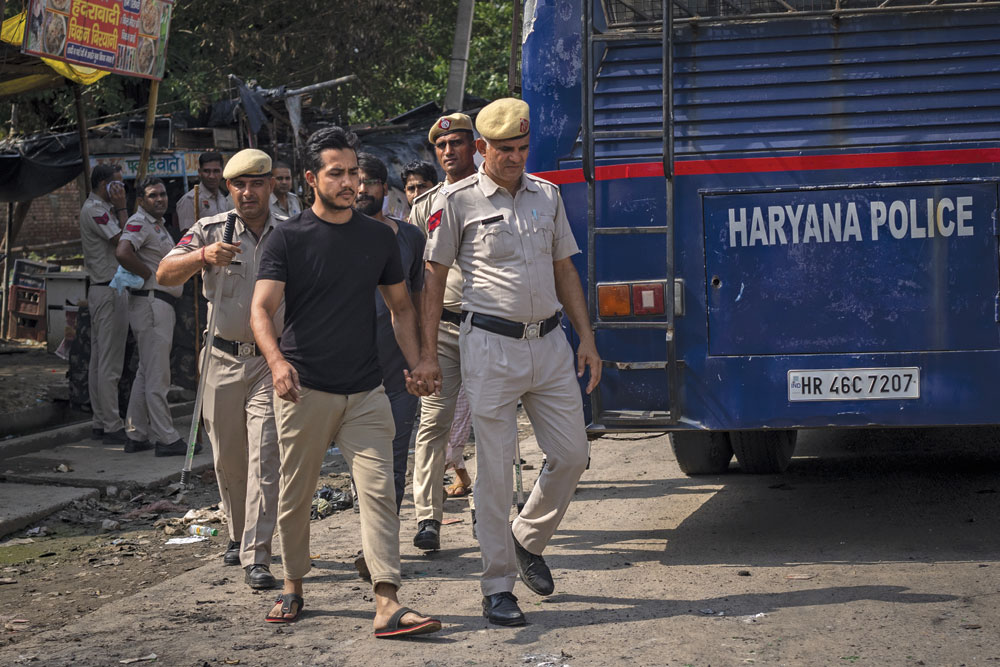
The participants in the yatra who had come from neighbouring districts in addition to locals fled for their lives, many reaching and seeking shelter in the Nalhar Mahadev temple which was to be the destination of the procession. Held over the last three years, the yatra’s significance lies in the temple’s small reservoir associated with the belief that the Pandavas halted there and drank the water during their years in exile. The website of the Nuh administration describes the temple as a “place of interest” and notes: “There is a reservoir where the water was trickling directly into a hollow created (natural) in the tree from the rock…The water keeps flowing around the year into this hollow and this is the reservoir that people locally talk with veneration as it is believed by locals that it is some ‘chamatkar’ (miracle) of the gods that water is flowing out of the rocks in this arid region. It is also believed that the Pandavas stayed there and drank this water during their 14-year exile.”
Who could be behind the violence? The investigation is in its initial phase but the use of firearms and the targets offer a clue. A bus was commandeered by the rioters and driven into the Nuh cyber crime cell’s office
THE VIOLENCE WAS not limited to the Nuh chowk. It spread rapidly along the road that leads into the town and in a matter of hours dozens of vehicles had been burnt, including police cars. The force of a couple of hundred police and home guard personnel proved completely inadequate in countering the violent and well-armed mob. According to police accounts, the violence spread beyond the main Nuh road and also affected smaller roads where vehicles carrying VHP volunteers or yatris were targeted. Here too, as was the case in the Nuh town itself, plastic containers used to carry cold drinks were used to stock stones and bricks. In the aftermath of the violence, evidence indicated that groups of rioters had placed themselves in the hills near the Nalhar temple and fired shots and hurled stones at yatris who sought refuge there. The violence raged on for close to five hours before police reinforcements were able to rescue hundreds of yatris, including many women and children and the injured, from Nuh town and the temple.
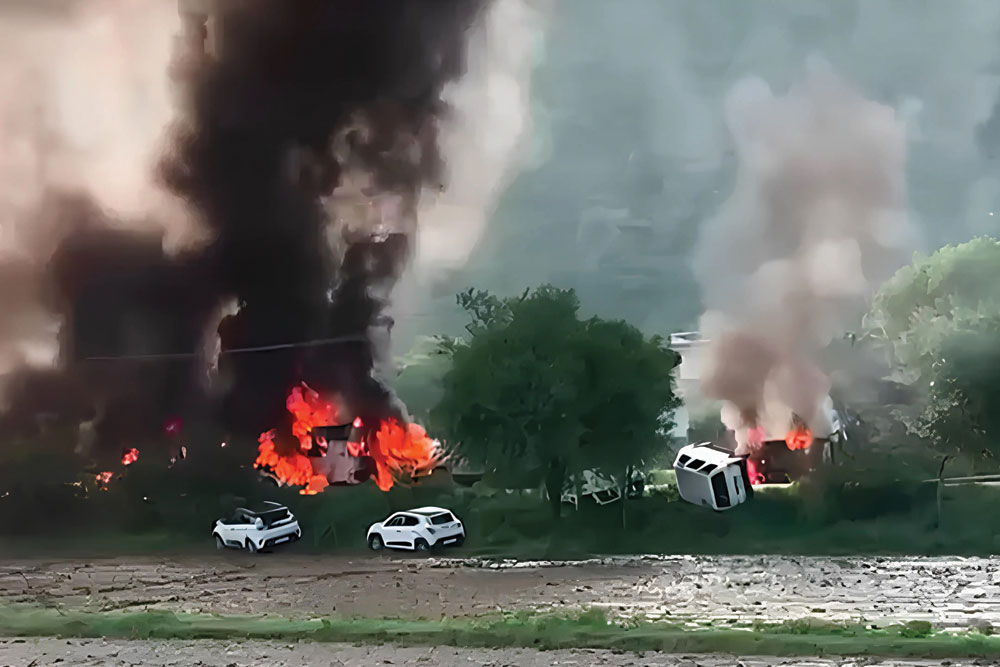
The pattern of violence, with the benefit of hindsight, is a chilling repeat of the anti- CAA (Citizenship Amendment Act) riots of 2020 and the earlier rioting on the Jamia Millia campus in 2019. The conspirators used WhatsApp groups to organise, coordinate and mobilise mobs. Petrol bombs and bricks were stocked for use against the police while wet towels were kept ready to douse tear-gas canisters. Several accounts of the Jamia violence omit the preparations to stage violent protests and instead centre round the entry of cops on campus in pursuit of rioters. A similar mode of operation was observed in the attack on a Hanuman Jayanti procession in Delhi’s Jahangirpuri in April 2022, where again a Hindu procession was confronted by a mob of around 200 persons armed with sticks and stones and set upon. Nearby rooftops were used for storing bricks and bottles that rained down on the procession and the accompanying police party that had been lulled into complacence since a similar yatra had taken place earlier in the day without any mishap. The main organiser of the violence was a local hoodlum and some of the accused were learnt to have procured Aadhaar cards in West Bengal while the role of Rohingya illegals was also probed by Delhi Police. Within days of being released on bail in November 2022, the main accused in the Jahangirpuri case was re-arrested for trying to stir up trouble again by organising a procession.
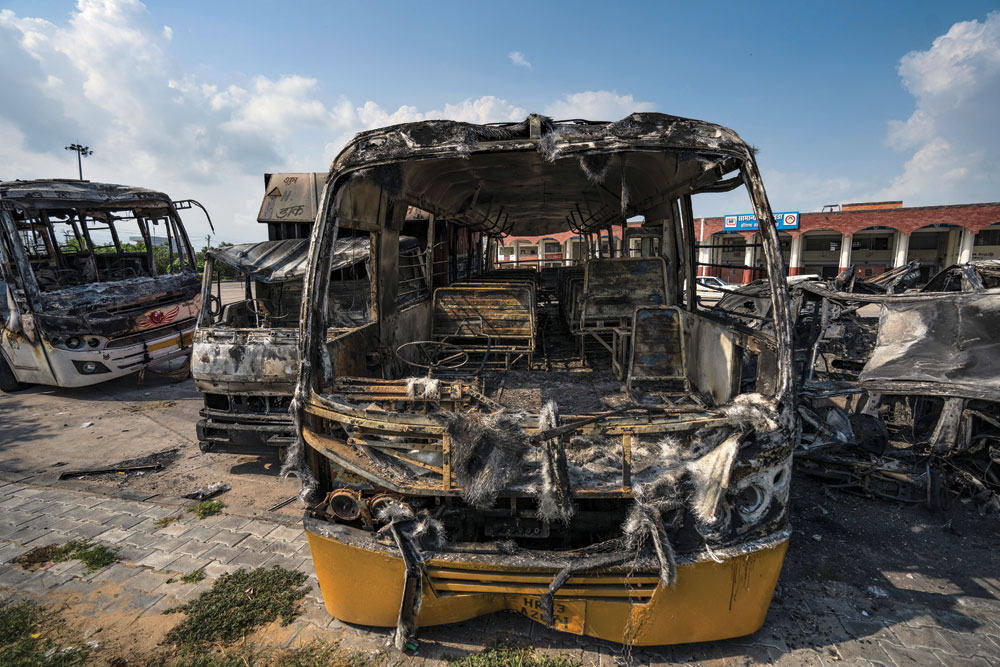
The violence in Nuh spread to pockets in nearby areas like Palwal and Gurugram later in the day on July 31 and August 1. There were retaliatory attacks on Sohna Road and Badshahpur areas of Gurugram and Palwal and mosques were targeted. Early on August 1 morning, a mosque in Gurugram was attacked and one person stabbed to death. Muslim vendors in some areas were asked to pack up and leave as tensions mounted and reports came in of landlords asking migrants to vacate homes in slums. On the advice of the district administration, many offices opted for a work-from-home mode and Gurugram’s usually busy streets wore a more deserted look. The scale of violence in Nuh and adjoining areas however made it clear that the police and local administration had been caught napping due to a significant intelligence failure. They appeared to have received no tip-off of what was in the works and treated the yatra as a routine event. A deputy superintendent of police, who was injured in the first wave of rioting, seems to have been the seniormost officer on the spot and the targeted attacks of the mob ensured several police personnel suffered injuries within minutes of the violence engulfing the Shoba Yatra.
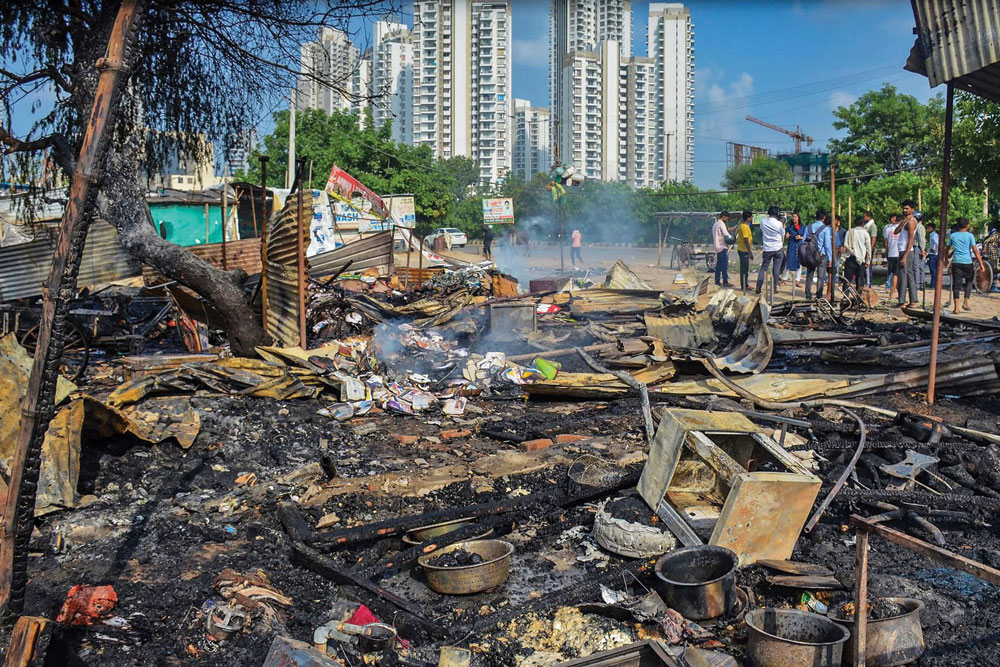
The social media posts of Monu Manesar, a prominent gau rakshak (cow vigilante) named in the murder of two Muslims in Bhiwani in February, are seen to have had an inflammatory effect. Monu, along with one Bittu Bajrangi, urged people to participate in the yatra and the former claimed he would be present too. Bajrangi seems to have a Twitter handle on which a poster bearing his name was posted on July 29 urging people to take part in a one-day yatra in support of “our faith and temples”. Bajrangi describes himself as president of Gau Rakshak Bajrang Force. Monu’s claim that he would participate in the yatra led, according to some reports, to a sharp reaction among Muslims in the Mewat region. Yet, the planning and coordination as well as the spread of violence make it evident that the organisers behind the attacks did not act on short notice. Local sources said it was clear that the violence was carefully organised with a large number of stones and bricks stocked in parks, along roadsides and on roofs, while a number of illegal firearms were used. The police investigation reveals a familiar pattern of WhatsApp groups being formed and ‘tasks’ being allocated and directions issued about where rioters were to gather. In the videos that went viral, minors can also be seen to be part of the mobs that roamed the streets of Nuh on July 31.
The incidents pose a serious political challenge to the Manohar Lal Khattar government in Haryana. Sangh outfits like VHP and Bajrang Dal are livid about the lack of anticipation on the part of the local administration
WHO COULD BE behind the violence that occurred in Nuh? Although the investigation is in its initial phase, the liberal use of firearms and some of the targets offer a clue. A bus was commandeered by the rioters and driven into the Nuh cyber crime cell’s office. Physical damage to the office would not be expected to erase crime records, something those behind the attack would be aware of. The idea, it would seem, was to warn the police against investigating the Jamtara-type crime cells that have sprung up in Nuh and have been the focus of law enforcement in recent months. Mewat is also the epicentre of cattle smuggling and illegal slaughter as well as illegal mining with mafias that run the business often clashing with police and gau rakshaks. The mafia operates from the interiors of Mewat and in the neighbouring Alwar district of Rajasthan which also has the dubious distinction of being a cattle smuggling and illegal slaughter hub. The business is highly lucrative, with cattle stolen from farmsteads worth between `25,000 and `35,000 per head. This is apart from the illicit sale of older animals and capture of stray animals. The cattle smugglers and vigilantes are engaged in a dangerous cat-and-mouse game. The vigilantes, acting on tip-offs, chase vehicles suspected of carrying smuggled cattle. The cattle smugglers are well-armed and often throw the animals off their vehicles and hurl stones when chased. The police have set up special anti-cattle smuggling cells but have been unable to prevent either gau rakshaks or criminal gangs from their deadly pursuits. A few years ago, the Haryana DGP candidly informed the High Court of Punjab and Haryana that confronting cattle smugglers and illegal slaughter was a very hazardous business that put police personnel at risk. The Nuh police have been trying to generate community support against illegal trade and slaughter with around 90 villages identified as the hub of the business, according to a report in The Tribune. The poor conviction rate under the state’s Gauvansh Sanrakshan and Gausamvardhan Act (cow protection law) has seen the high court pull up the police on more than one occasion.
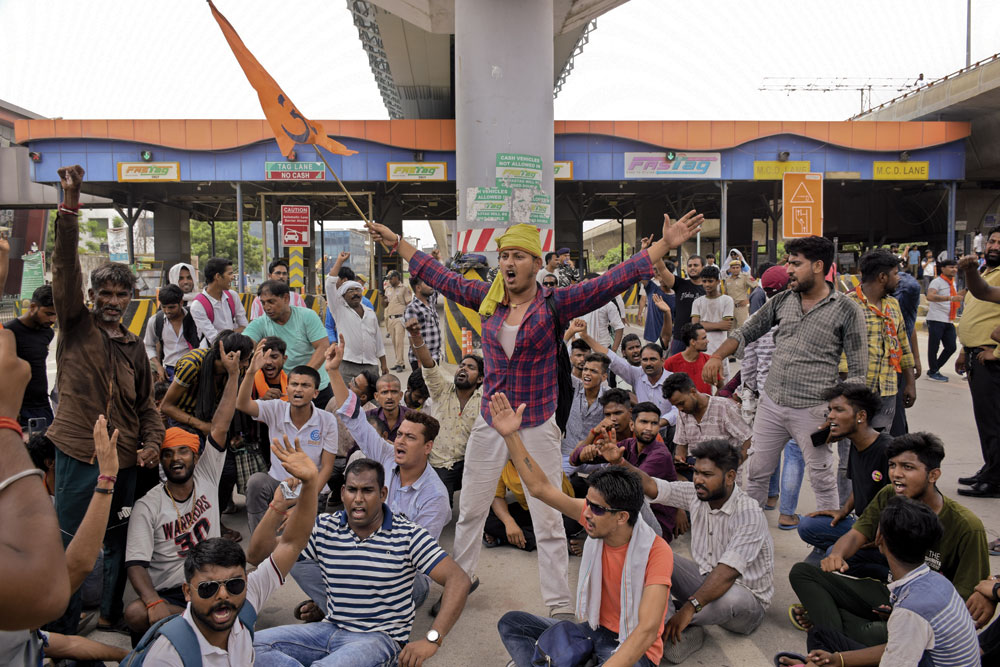
HE INCIDENTS IN Nuh pose a serious political challenge to the Manohar Lal Khattar government in Haryana. On the one hand, Sangh outfits like VHP and Bajrang Dal are livid about the lack of anticipation on the part of the local administration. Having organised the yatra and mobilised people in south Haryana, VHP finds itself accused of having exposed yatris to injury and death. VHP International working president Alok Kumar said the violence was an intelligence failure. “We have the right to self-defence and we will exercise this. The police preparedness in a so-called sensitive area was very inadequate,” Kumar said. Chief Minister Manohar Lal Khattar and Home Minister Anil Vij said there was a conspiracy and a mastermind behind the violence and promised action against the accused. The outbreak of communal violence near Gurugram and in the vicinity of Delhi is a poor advertisement for a city that is India’s premier IT hub, home to hundreds of Indian and foreign firms, and now increasingly startups as well. An old-style politician, the chief minister will have to act on his promise to bring the guilty to book. The decision to station a 1,000-strong paramilitary force in Nuh is a belated recognition that Mewat’s entrenched and fearless mafias need to be tackled on a war footing by deploying boots on the ground and using technology such as drones to penetrate the area’s heavily wooded and hilly terrain.
The region is testimony to development deficits and has bred criminal activities that are part of the reason why Nuh-Mewat is a communal tinderbox. The Singar village, where passersby were attacked, has a total literacy rate of around 30 per cent and a female literacy under 9 per cent
The region is testimony to stubborn inter-generational development deficits and has bred criminal activities that are part of the reason why Nuh-Mewat is a communal tinderbox. The Singar village, where passersby were attacked, has a total literacy rate of around 30 per cent and a female literacy under 9 per cent according to Census 2011. A large village with more than 3,000 houses, it seems to typify the lack of opportunity. It has been argued that absence of government attention and exclusion have led people in Mewat to take to crime. While this may well be reflective of a chicken-and-egg situation, there are strong vested interests that would like things to remain the way they are. A report in 2014 highlighted a high incidence of power theft and government initiatives to electrify villages have faced a lot of resistance. Residents have balked at paying for electricity and government staff have been attacked. It required sustained outreach to complete delivery of a power connection to all willing households under the Saubhagya scheme launched by the Centre in September 2017. It was a year ago, in July 2022, that a deputy superintendent of police was run over by a truck driven by illegal miners after he took them by surprise near Tauru. It was not particularly surprising either when Nuh began to report cyber and call-centre frauds. Deprivation might provide one reason for higher instances of crime and the attack on the Shoba Yatra has the gau rakshaks versus cow smugglers backdrop as well. But communal mobilisation and the violent attack on yatris are clearly intended to instil fear and deter any Hindu religious activity at all in the region where Muslims constitute nearly 80 per cent of the population. The sanctity of the Nalhar temple and the yatra was carefully considered to drive home the message.
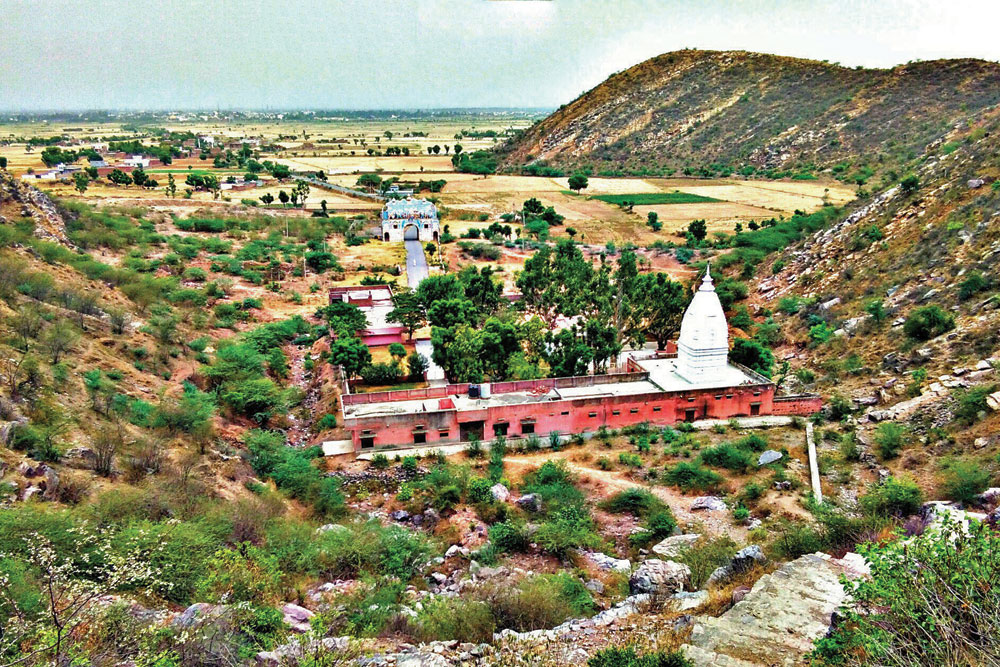
The Nuh violence is likely to reinforce the militant element in the mobilisation of organisations like VHP and Bajrang Dal and lend a sharper edge to Hindu identity politics. Aggressive acts such as the attack on the VHP yatra reflect a hardening of communal sentiment within the Muslim community with individuals, political parties, organisations and, as seems to be the case in Mewat, the mafia fuelling tensions. There is a distinct possibility that there could be more such incidents ahead of the Lok Sabha polls although national crime statistics show a drop in communal violence and rioting overall in the last few years. Though anecdotal evidence, particularly in the proximity of the capital, attracts disproportionate attention, it has a wider signalling effect. The approach of Uttar Pradesh Chief Minister Yogi Adityanath towards criminals and the mafia—authorising the use of force if the accused do not surrender or if they offer resistance—may need to be replicated to send a deterrent message. The idea is not an encounter raj but an unambiguous signal that mafias and communal mobilisers will face relentless pressure from law enforcement and will be brought to book.

/wp-content/uploads/2025/05/Cover-AfterPahalgam.jpg)








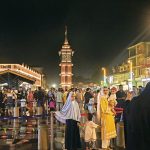



More Columns
The Logic of Grace: On the Election of Pope Leo XIV Open
Rubio asks India, Pak to de-escalate but asks Sharif to stop support to terrorism Rajeev Deshpande
Pakistan Launches Another Wave of Attacks on India Open